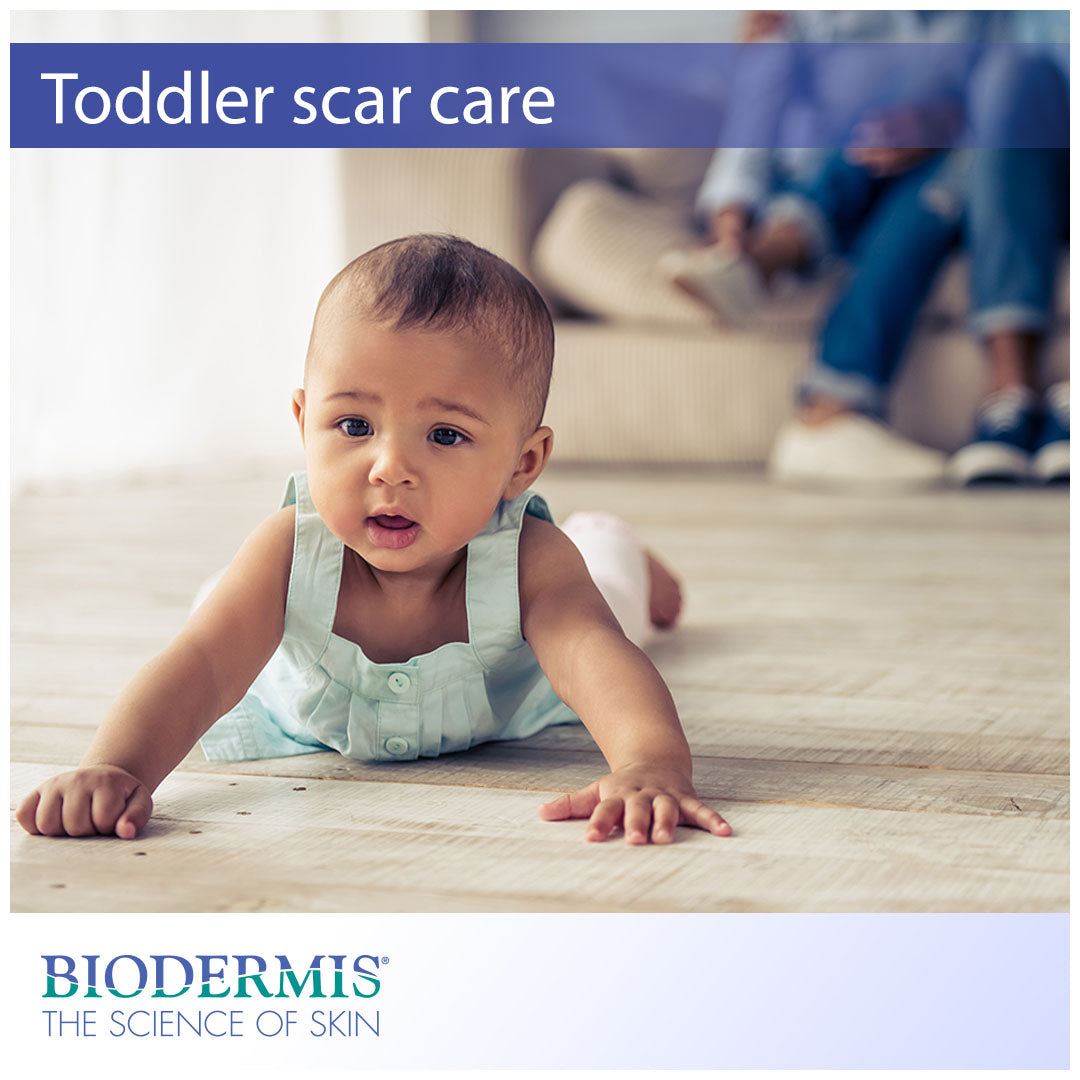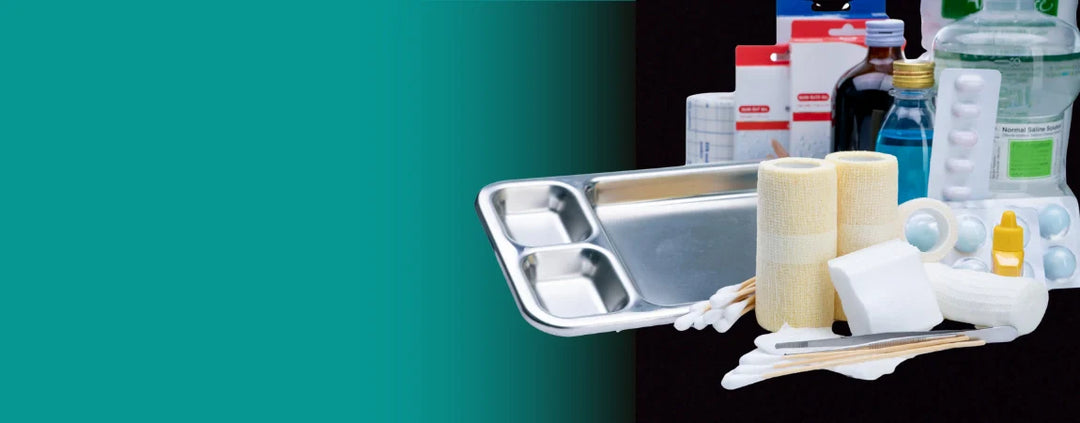It’s no surprise that young children and babies are more prone to injury and subsequent scarring than adults. This is because children are naturally curious as they learn about the world around them through exploration and adventure. No toddler learns how to walk without falling. And most of us have heard our parents tell us to look out for sharp corners on more than one occasion. Apart from childhood injury, many babies are born with cleft lips, congenital heart issues, or other problems that require surgery to fix. Notwithstanding the many ways toddlers can end up with scars, there are safe and effective scar care treatments that are available to all parents with accident-prone children.
Continue reading to learn more about childhood scars and what you can do as a parent to reduce and prevent abnormal scar types.
Scar formation in babies and toddlers
Scars follow the same process in children as they do in adults. This is a good thing because it allows us to understand scar formation in a predictable way so that we can better treat them. Immediately after a child attains a wound, a dynamic wound healing process begins. The process begins with hemostasis, which is marked by blood clotting that helps to reduce blood loss. Next is inflammation which helps to stave off infection by creating the sensation of pain, swelling, and heat at the wound site. The final stages include proliferation and maturation which help to seal the wound shut and allow the skin to regain its former structure and integrity. Once the stages of wound healing are complete, and depending on the severity of the wound, scar tissue will form.
To reduce the risk of scarring and ensure that your child doesn’t develop abnormal scar types like keloids and hypertrophic scars, it’s important to observe proper wound care measures. This means that wounds need to be cleaned and covered with a gauze or bandage regularly to prevent infection. Wounds should be cleaned under lukewarm running water and gently lathered with a gentler cleanser or soap. This will help remove any dirt or germs from the wound site. After the wound has been cleaned and patted dry, an antibiotic should be applied to keep the area moist and safe from germs. Once you child’s wound is closed and begins to scab, you should continue covering it with a bandage because young children like to pick at their scabs.

Silicone gel for scar treatment
Scars can often be with a person for their entire life. While a baby or toddler may not remember the injury later in life, the scar will be there to remind them of their early accident-prone years. As a parent, you don’t want you child to grow up with excessive scar tissue, especially if the scar develops on a noticeable part of the body like the face or arms. It’s good to know that there are treatment options available for all scar types no matter how old you are.
Silicone gel sheeting and sticks are the only proven topical scar therapy methods currently available to consumers today. Medical silicone gel for scar management has been used by surgeons and dermatologists for the last 30 years because it’s clinically-proven and effective for all scar types. Topical silicone helps to prevent abnormal scar types before that happen and helps to reduce the appearance of existing scars. Options that make scar therapy more tolerable for children include the Prosil Kids silicone scar stick and the Epiderm silicone strips in camo green and pink.
Continue reading to learn more about childhood scars and what you can do as a parent to reduce and prevent abnormal scar types.
Scar formation in babies and toddlers
Scars follow the same process in children as they do in adults. This is a good thing because it allows us to understand scar formation in a predictable way so that we can better treat them. Immediately after a child attains a wound, a dynamic wound healing process begins. The process begins with hemostasis, which is marked by blood clotting that helps to reduce blood loss. Next is inflammation which helps to stave off infection by creating the sensation of pain, swelling, and heat at the wound site. The final stages include proliferation and maturation which help to seal the wound shut and allow the skin to regain its former structure and integrity. Once the stages of wound healing are complete, and depending on the severity of the wound, scar tissue will form.
To reduce the risk of scarring and ensure that your child doesn’t develop abnormal scar types like keloids and hypertrophic scars, it’s important to observe proper wound care measures. This means that wounds need to be cleaned and covered with a gauze or bandage regularly to prevent infection. Wounds should be cleaned under lukewarm running water and gently lathered with a gentler cleanser or soap. This will help remove any dirt or germs from the wound site. After the wound has been cleaned and patted dry, an antibiotic should be applied to keep the area moist and safe from germs. Once you child’s wound is closed and begins to scab, you should continue covering it with a bandage because young children like to pick at their scabs.
Silicone gel for scar treatment
Scars can often be with a person for their entire life. While a baby or toddler may not remember the injury later in life, the scar will be there to remind them of their early accident-prone years. As a parent, you don’t want you child to grow up with excessive scar tissue, especially if the scar develops on a noticeable part of the body like the face or arms. It’s good to know that there are treatment options available for all scar types no matter how old you are.
Silicone gel sheeting and sticks are the only proven topical scar therapy methods currently available to consumers today. Medical silicone gel for scar management has been used by surgeons and dermatologists for the last 30 years because it’s clinically-proven and effective for all scar types. Topical silicone helps to prevent abnormal scar types before that happen and helps to reduce the appearance of existing scars. Options that make scar therapy more tolerable for children include the Prosil Kids silicone scar stick and the Epiderm silicone strips in camo green and pink.
Biodermis is an innovative market leader with 30 years of expertise in the medical silicone industry. Visit Biodermis.com today to explore a complete range of scar management and post-operative care solutions.
PHYSICIANS AND MEDICAL PROFESSIONALS: REFER OR RESELL?
Biodermis offers custom tailored referral programs designed to simplify and reduce the cost of your patients' post-op care. Additionally, we offer professional pricing if you opt to retail our products. Give us a call at 800.322.3729, and we will be happy to provide additional details on these programs.



